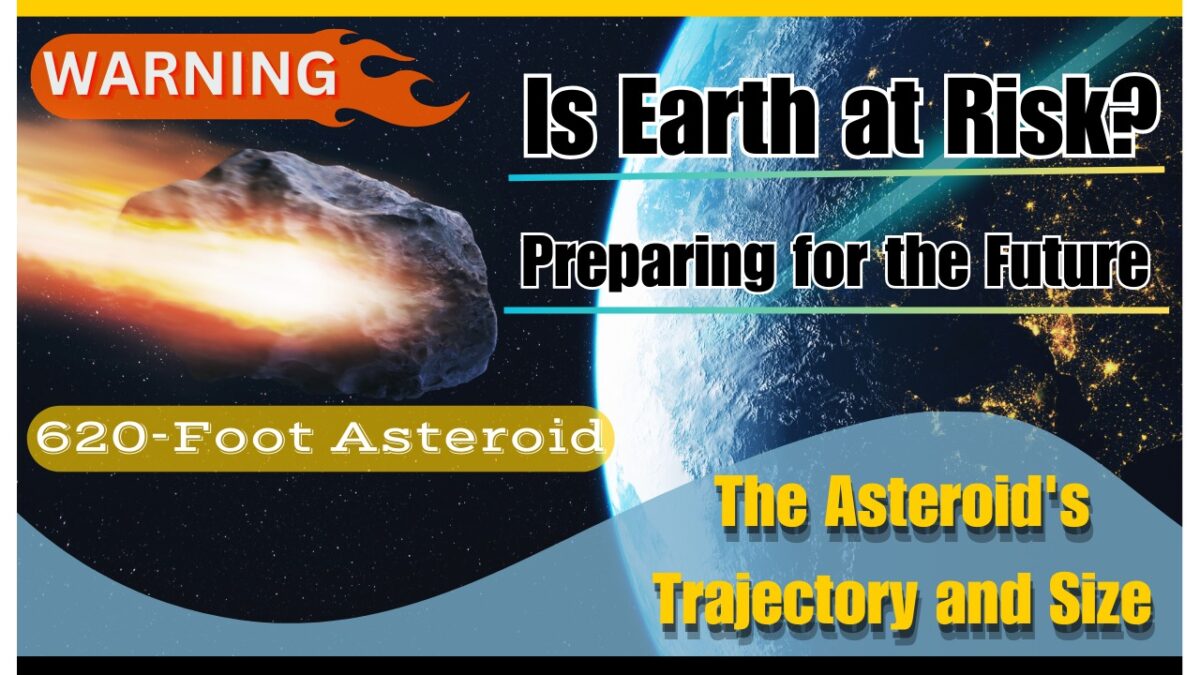NASA has issued an alert regarding a 620-foot-wide asteroid that is steadily approaching Earth. The celestial body, which has captured the attention of astronomers and the public alike, poses intriguing questions about its potential proximity to our planet. With NASA’s robust tracking systems and advanced technology, scientists have been closely monitoring this asteroid’s trajectory, raising concerns and curiosity about whether it will come too close for comfort.
The Asteroid’s Trajectory and Size
The asteroid, officially designated as [insert asteroid’s name or designation if available], is approximately 620 feet in diameter—making it larger than the Great Pyramid of Giza. Its size and speed make it a significant object of interest, as even an asteroid of this size could cause considerable damage if it were to collide with Earth. NASA’s Near-Earth Object Observations (NEOO) program has been tracking the asteroid’s movement through space, gathering data to determine its exact path.
NASA’s Monitoring and Predictions
NASA’s Planetary Defense Coordination Office (PDCO) is responsible for tracking near-Earth objects (NEOs) and assessing potential threats. According to their latest reports, the asteroid is expected to pass by Earth at a safe distance, but it will come closer than many other celestial bodies. The current predictions suggest that it will pass within a few million miles of Earth—a distance that may seem vast but is relatively close in astronomical terms.
The Potential Risks
While NASA assures the public that the asteroid poses no immediate threat to our planet, the close approach highlights the importance of continued vigilance. Even though this asteroid is not expected to impact Earth, its approach serves as a reminder of the potential dangers that NEOs can present. A collision with an asteroid of this size could cause significant regional devastation, potentially leading to widespread consequences.
Preparing for the Future
NASA and other space agencies around the world are actively working on strategies to mitigate the risk of future asteroid impacts. One such initiative is the Double Asteroid Redirection Test (DART) mission, which aims to test our ability to redirect a hazardous asteroid’s trajectory. The successful implementation of such technology could be crucial in preventing a potential disaster in the future.
Conclusion: Should We Be Concerned?
The asteroid’s approach is a fascinating event that underscores the importance of monitoring space for potential hazards. While this particular asteroid is not expected to pose a threat, it is a stark reminder of the need for continued research and preparedness. As our understanding of the cosmos grows, so too does our ability to protect our planet from potential dangers.
For now, the asteroid’s passage will likely be a spectacle for astronomers and enthusiasts, offering a unique opportunity to observe a celestial body up close. NASA’s ongoing efforts to track and study near-Earth objects ensure that we remain informed and prepared, ready to respond to any potential threats that may arise in the future.
Related posts
Subscribe
* You will receive the latest news and updates on your favorite celebrities!

